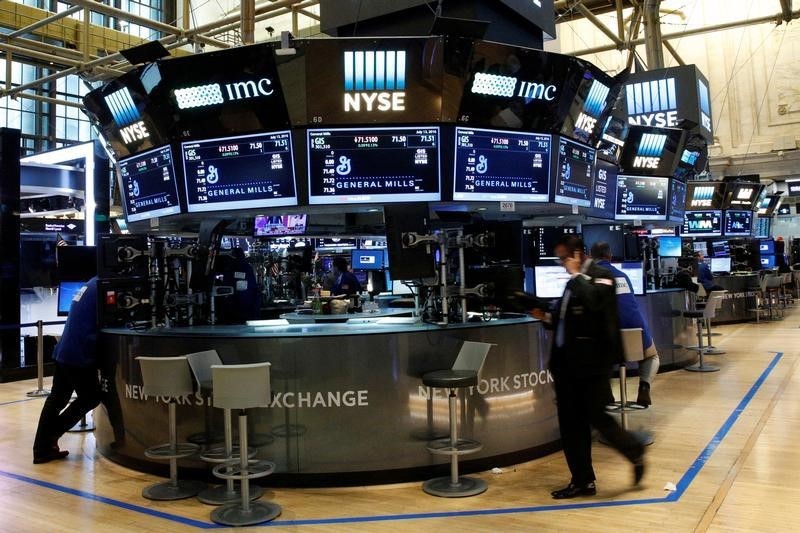By Lewis Krauskopf
NEW YORK (Reuters) - Investors questioning whether record high U.S. stock prices mean it is time to bail out of equities should look beyond the elevated levels found in the widely used valuation tool, the price-to-earnings (P/E) ratio, experts say.
The benchmark S&P 500 stock index hovers just underneath an all-time peak, and its P/E ratio has recently been at the highest level in more than a year. It remains well above historic averages.
Investors who favor stocks point to two factors why that ratio may not tell the whole story.
First, there is the possibility that valuations appear inflated because corporate profit levels are particularly depressed. Second is the relative appeal of equities in a low bond-yield environment.
"Stock valuations in an absolute sense are getting elevated, which suggests that markets are pricing in an earnings recovery that has not unfolded as yet," said Alan Gayle, director of asset allocation at RidgeWorth Investments in Atlanta, Georgia.
Still, Gayle said: "Our view has been that stocks still represent a better value relative to bonds."
Stock valuations are high based on earnings reported by S&P 500 companies over the past year, as well as expected profits over the next 12 months.
The trailing S&P 500 P/E ratio stands at 18.8, above the 15.9 average over the past decade, according to Thomson Reuters I/B/E/S.
One reason for the higher P/E is that S&P 500 companies in aggregate have reported falling earnings over the past four quarters, weighed down by weak results in the energy sector.
A recent stabilization in oil prices is expected to help bolster energy company results.
"Some of the higher current readings have more do with we’re still recovering from the oil and commodity collapse, which is going to reverse somewhat," said Jim Paulsen, chief investment strategist at Wells Capital Management in Minneapolis.
Looking ahead, the S&P 500 trades at 17.3 times earnings estimates for the next 12 months, well above its 10-year average of 15.6 times.
While somewhat expensive, the valuation remains within one standard deviation of its typical level, said John Traynor, chief investment officer of People’s United Wealth Management in Bridgeport, Connecticut.
"We're not at nosebleed territory," said Traynor, whose firm has been buying U.S. equities.
S&P 500 earnings are expected to dip 0.5 percent in the third quarter, but then rise about 8 percent, 15 percent and 13 percent in the ensuing three quarters, according to Thomson Reuters I/B/E/S.
"We think you’re going to see an earnings acceleration over the next 12 months, which will make today’s market look fairly valued," Traynor said.
LOW INTEREST RATES HELP STOCKS
Low bond yields are another boost to stock valuations.
Investors often weigh stocks by taking expected earnings streams and discounting them to a present value. As interest rates fall, the discount is reduced, so the current low-interest rate environment makes those future cash flows look more attractive.
Comparing bond yields and earnings yields - a measure of earnings divided by the stock price - also favors stocks.
The earnings yield for the S&P 500 is currently about 5.8 percent, while the Merrill Lynch U.S. High Yield index <.MERH0A0> has a yield of 6.4 percent.
This makes stocks look relatively more attractive, on an historical basis. In this case, the earnings yield is 90 percent of the yield on those bonds, a variation that, on average, has been 54 percent for the past 30 years, according to Brian Reynolds, chief market strategist at New Albion Partners in New York.
So for investors running diversified portfolios, stocks still offer good value, RidgeWorth's Gayle said.

"Would we like to see 10 P/Es in here? Sure," Gayle said. "But we are investing in the market that we have."